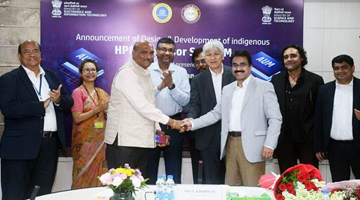Policy makers in debt-stressed nations should act on IMF's recipe
OCTOBER 20, 2016
By TIOL Edit Team
A slew of International Monetary Fund (IMF) documents on record global debt should rattle all policy makers including the ones who frame tax policies.
Released during October 2016, the documents give valuable insight into challenges in resolving debt problem. The Finance Ministry, Reserve Bank of India and banks should benefit from this in rolling out a framework for sustainable debt.
The reports and working papers (WPs) should also help them undertake cost-benefit analysis of corporate debt restructuring (CDR) and in preventing recurrence of unsustainable debt in future.
IMF deserves applaud for focusing on this mother of all major economic woes in its latest bi-annual 'Fiscal Monitor' report. It is aptly titled 'Debt-Use It Wisely'.
The report shows that global debt at USD 152 trillion is at an all-time high, aggregating to 225 percent of world GDP. Of this, two-thirds (or USD 100 trillion) is the debt of the private sector with the balance being public debt.
Private credit has grown sharply in certain emerging market economies (EMEs) such as China. The report cautions: "The speed of the increase dangerously resembles that in advanced economies in the run-up to the global financial crisis."
The report is packed with empirical evidence that affirm the premise that financial crises tend to be associated with excessive private debt levels in both advanced and EMEs. The resulting recession is acute and prolonged in countries with weak fiscal health.
The implications of analysis made in the report are eye-opener. As put by the Report, "Financial recessions in emerging market economies result in output losses that are almost double those in advanced economies after five years. These results underscore the importance of having the prudential and regulatory frameworks necessary to keep private debt in check as well as the value of prudent fiscal policy."
Pitching for growth-friendly fiscal policy, the Report has favoured targeted fiscal interventions to clean balance-sheets of both debtors and creditors. The interventions can be grouped into two categories - 1) Initiatives such as subsidies for creditors to lengthen maturities, guarantees, and direct lending to aid voluntary restructuring of private debt. 2) Steps such as capital infusion in banks and setting up of asset management companies that facilitate cleanup of banks' balance sheets.
The Report has preferred targeted subsidies, fund transfers and loans to tax incentives for cleaning up private balance sheets. It believes that tax incentives can be exploited by companies for tax avoidance and add complexity to a country's tax system.
Another IMF document captioned 'The Managing Director's Global Policy Agenda-Getting Growth Right', has disclosed that IMF staff will analyze how some tax systems magnify macroeconomic stability risks by favouring debt finance.
We hope Indian budget-makers would take this as a lead to study whether tax incentives have contributed to unsustainable debt in the corporate sector.
Similarly, they as well as bankers should draw lessons from IMF's WP captioned 'Benefits and Costs of Corporate Debt Restructuring: An Estimation for Korea'.
WP says: "Benchmark results for Korea suggest 5.5-7.5 percent of GDP creditor losses and a 0.4-0.9 percent of the labour force employment impact from the debt restructuring. These are compensated by a permanent 0.4-0.9 percentage points increase in future GDP growth thanks to higher corporate investment and 0.05-0.1 percent of labour force higher hiring in the subsequent years. The key qualitative result is that corporate debt restructurings 'pay off' in the medium term: their economic cost is recouped over about 10 years."
No global discourse on CDR is complete without taking a hard looking situation in China, which is one of the major drivers of global economic growth.
Another WP titled "Resolving China's Corporate Debt Problem' notes that corporate credit growth in China has been excessive in recent years. This credit boom is related to the large increase in investment after the global financial crisis. Investment efficiency has fallen and the financial performance of corporates has deteriorated steadily, affecting asset quality in financial institutions."
Pitching for urgent formulation of a comprehensive debt resolution problem, WP says: "Potential 'debt-at-risk' is estimated to be about 15½ percent of the total corporate loan portfolio as of end-2015, which could yield estimated potential losses of about 7 percent of GDP."
As regards public debt, it is worthwhile to draw attention to a WP titled 'The Blind Side of Public Debt Spikes'. It has concluded that debt spikes are not rare events and their probability increases with time. The Paper arrived at this finding after studying 179 debt spike episodes from 1945 to 2014 across advanced and developing countries.
It has concluded that large debt spikes are typically driven by large stock-flow adjustments (SFAs), rather than primary deficits or declines in output.
According to IMF, SFAs refers to change in the gross debt explained by factors other than the overall fiscal balance (for example, valuation changes). SFAs explain the difference between the change in government debt and the government deficit/surplus for a given period.
WP notes that SFAs are often linked to an accumulation of illiquid assets that are difficult to offload for reducing debt. The consequences of large SFAs can be long-lasting.
As put by the Paper, "Better forecasting will help countries get a proper understanding of their debt vulnerabilities and build fiscal buffers that could cushion them against unexpected shocks. This awareness will also help with instituting policies and measures necessary to meet their objectives for debt to GDP in the medium to long run."
The common message of IMF studies is that policy-makers have to be vigilant about gradual build-up of debt crisis and should prevent it through timely interventions.














